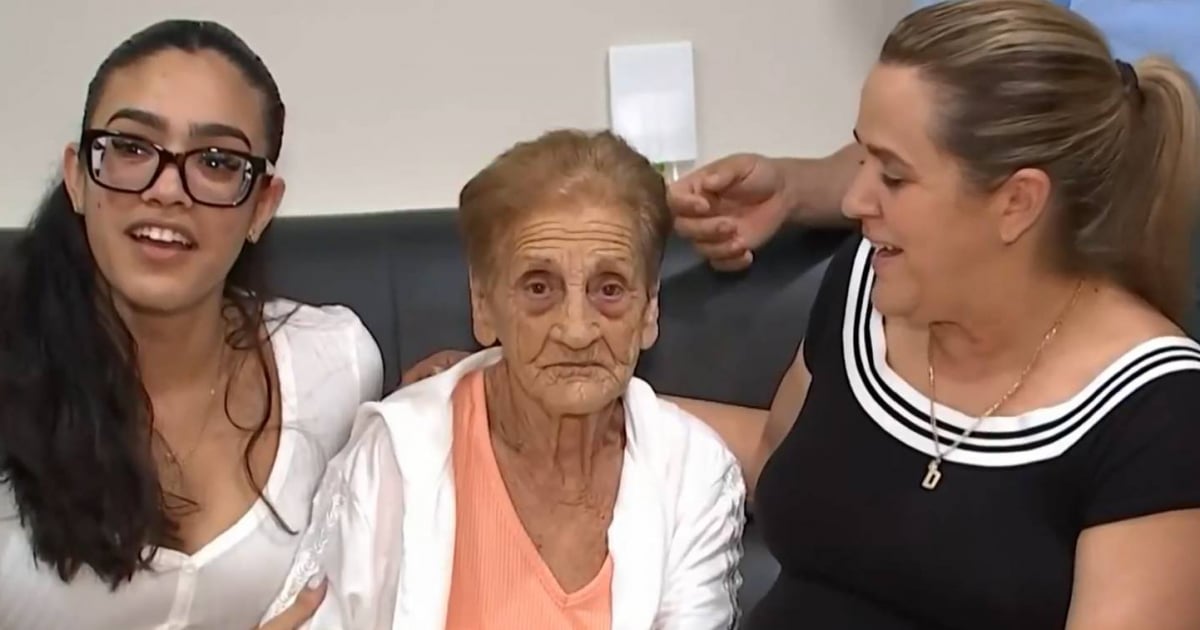The daughter of Olga Díaz, the 84-year-old Cuban woman who arrived in the United States by boat and now faces a deportation order, has expressed her deepest fears in a statement to Telemundo 51. "My biggest fear is that they will send her back to Cuba. I risked my mother's life because we couldn't take it anymore. I need to be with her because all she does is cry and cry," said Nilda Cordero, the daughter of Olga Díaz, speaking from the immigrant detention center where she remains after making the perilous journey from Cuba.
Mother and daughter were intercepted by the United States Border Patrol upon arriving by boat in the Florida Keys, near Marathon. The elderly woman was released from the ICE (Immigration and Customs Enforcement) center in Miramar, Florida, but her daughter was transferred to the Broward detention center, also under ICE jurisdiction.
"I was at home when I received a call from an unfamiliar number. When I answered, it was my mom calling to say, 'Daddy, I'm here.' I still can't believe it," explained Michael Hernández, the grandson of Olga Díaz and son of Nilda Cordero, in a statement to Telemundo 51.
Family's Concern Over Uncertain Future
Originally from Guanabacoa, Havana, Olga Díaz says she feels okay when surrounded by people, but gets sad when there are fewer people in the house where her family lives in Florida. "I miss her," said the elderly woman when asked about her detained daughter. She also mentioned that she still can't believe she is in the United States.
The family is worried because initially they were told that Nilda Cordero would be released, but that did not happen. Nilda’s sister is convinced that she risked their mother's life by making the journey from Cuba out of desperation and fears for what will happen to their mother as their future in the United States remains uncertain.
Nilda Cordero described the journey from Cuba as "very tough" and mentioned that her mother was "vomiting" throughout the trip, even soiling herself, and had to be carried and cleaned in the sea.
Dainay Cordero, Olga Díaz's other daughter who is in Miami, says their mother does not recognize her and spends most of her time crying. For both Nilda Cordero and Olga Díaz to stay in the United States, they need the opportunity to undergo a credible fear interview.
On Monday, August 26, the United States Coast Guard returned two rafters to Cuba who were intercepted south of Marathon on August 20. On August 23, another 41 people were sent back to the island, five of whom had been adrift for several days.
A total of 15,645 Cubans entered the United States in July, according to the latest data provided by the Customs and Border Protection (CBP). This figure represents a slight decrease compared to June, when 17,563 Cubans entered the country, marking the lowest entry recorded in the first nine months of fiscal year 2024, which began on October 1, 2023. During this period, 196,567 Cubans have entered the U.S. through various means.
FAQs About Cuban Immigration and Deportation
Here we address some frequently asked questions regarding the situation of Cuban immigrants facing deportation and the general process of immigration to the United States.
What is a credible fear interview?
A credible fear interview is a process where an asylum seeker must demonstrate a credible fear of persecution or torture if returned to their home country. This is a critical step for immigrants seeking asylum in the United States.
How many Cubans have entered the U.S. in 2024?
As of the first nine months of fiscal year 2024, 196,567 Cubans have entered the U.S. through various means.
What are the risks involved in crossing from Cuba to the U.S. by boat?
The journey from Cuba to the U.S. by boat is extremely dangerous, involving risks such as harsh weather conditions, lack of food and water, and the possibility of being intercepted by authorities and sent back to Cuba.
